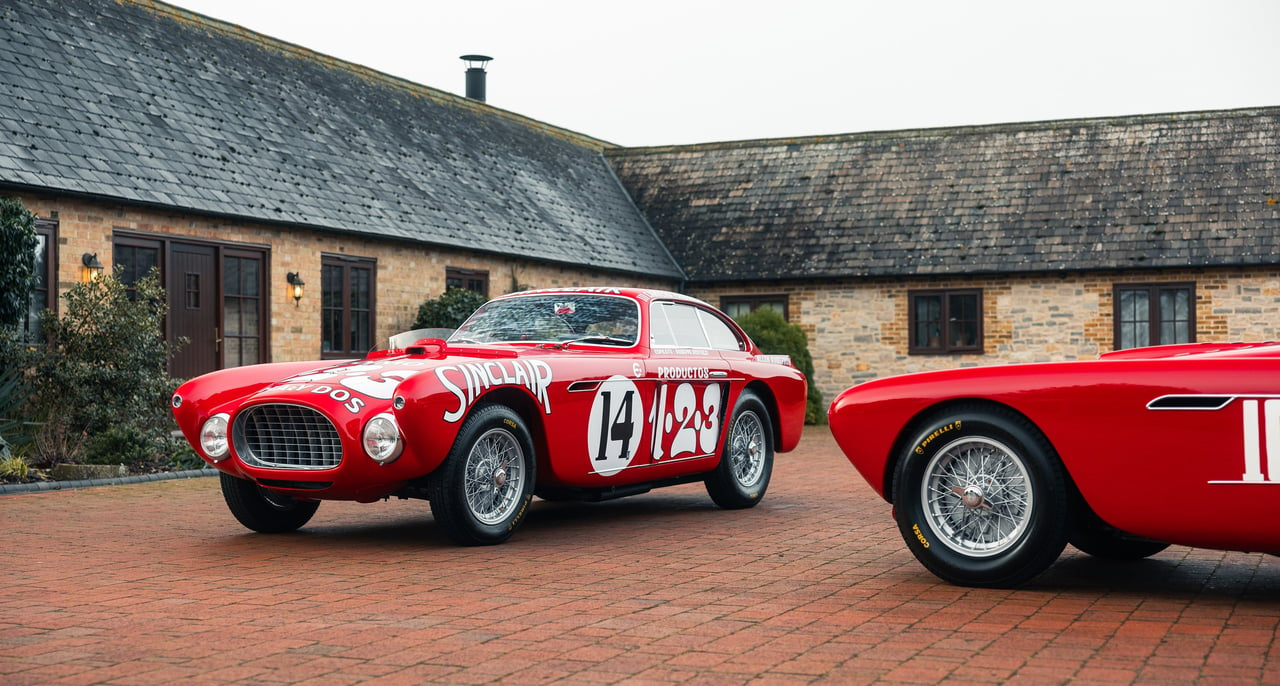
A New Arena
Motorsport is all about the challenge, and at the dawn of the 1950s, Enzo Ferrari and his Maranello-based racing firm were running out of ways to test their metal. Despite the company’s relative youth, they had already seized victory at the Mille Miglia, Targa Florio, Le Mans and numerous Grands Prix, so when news reached Italy of a new endurance event in Mexico that made Europe’s heavy hitters look like a stroll along the Italian Riviera, il Commendatore sent two Ferrari 212 Inters to America with the goal of securing victory at the Carrera Panamericana in 1951.
The race was a melting pot a talent and cutting-edge machinery, attracting Detroit’s ‘Big Three’ automakers and Europe’s titans of industry alike, while the best drivers the world over wanted to prove their dominance at the week-long 2,200 mile marathon of a race. Fuelled by the allure of the sizeable government-funded prize pot and even greater profits to be found among American customers, Ferrari expected no less than victory from Piero Taruffi and Alberto Ascari, and win they did, securing a one-two finish in front of 200,000 local spectators.

The following year, Ferrari were committed to defending their Mexican crown, and thus the Ferrari 340 Mexico was born. Compared to its 2.5-litre Colombo V12 predecessor, the 340 Mexico was an entirely different beast, powered by a whopping 4.1-litre all-alloy long-stroke SOHC V12 designed by Aurelio Lampredi and derived from the engine found in the race-winning 375 Formula 1 monoposto. At 276 bhp, these prancing horses were the most powerful vehicles to line up at the 1952 Carrera Panamericana’s starting line, which brings us to our two star cars of the day.



1952 Ferrari 340 Mexico Berlinetta chassis no. 0226 AT
First, we have the closed-top chassis number 0226 AT, one of just three 340 Mexico Berlinettas built. Designed by a young Giovanni Michelotti during his tenure at Vignale, the 340 Mexico already showed signs of American influence in its generous chrome trim and subtle tail fins, while a full-width bug deflector and vertical vents on the doors designed to feed cold air to the rear wheels reaffirmed its purpose-built nature.
As the name suggests, the singularly-focused 340 Mexico was endowed with numerous design elements to give it an edge over the competition at the Carrera. A 150-litre endurance fuel tank, extended fifth gear, quadruple carburettors, lightened tubular chassis, and strengthened rear axle were all installed with the sole intention of allowing the 340 Mexico to travel at full speed on questionable road quality hour after hour, day after day, regardless of altitude, weather, or wildlife.



Completed in September 1952, by November chassis number 0226 AT was rolling up to the starting line wearing the rather beguiling ‘Industrias 1-2-3’ livery, with the words ‘No Hay Dos’ fittingly translating to ‘nothing better’. With Alberto Ascari at the wheel, this prancing horse’s chances were looking good, however, the third edition of the Carrera had attracted formidable competition in the form of the Mercedes 300 SL. Unfortunately, success simply wasn’t on the cards, and after a blistering start that saw chassis number 0226 AT overtake nine cars in the first 50 miles, Ascari’s race was ended prematurely by an unpleasant encounter with a rocky ledge.
Following the race, chassis number 0226 AT was immediately returned to Italy for repairs, after which it crossed paths with a young chicken farmer by the named of Carroll Shelby, who drove it to a second place finish at the July round of the 1953 SCCA Championship. It would compete in three more SCCA events before Luigi Chinetti purchased the car, and thereafter it remained in the states for over four decades, passing between various prominent Ferrari collections.

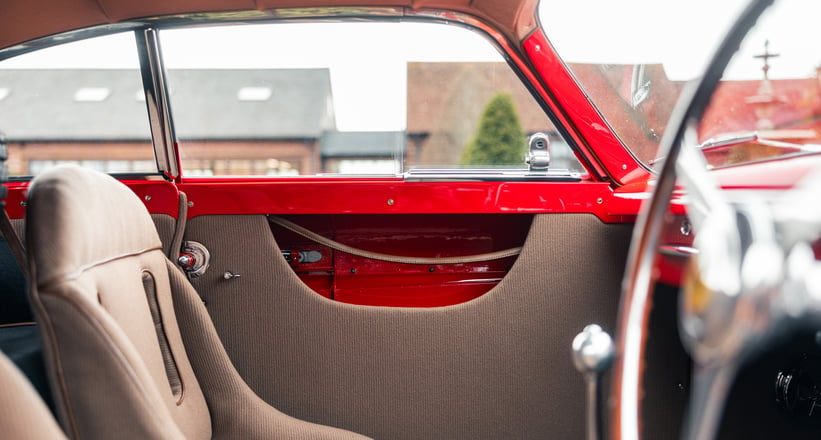
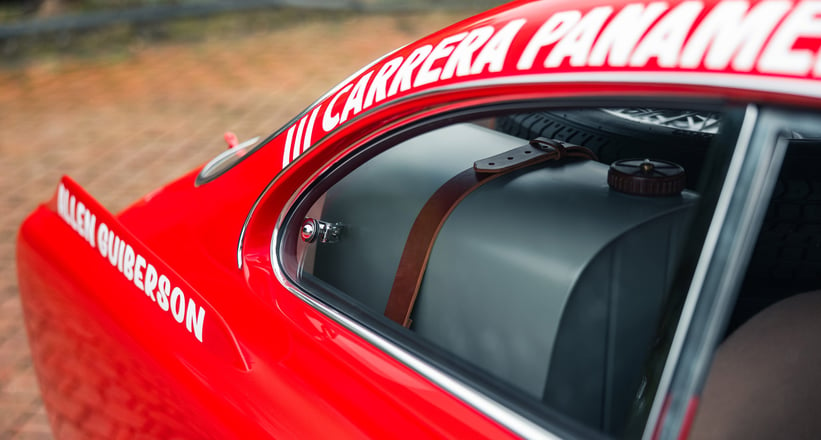
Today this 340 Mexico Berlinetta is in outstanding condition as a result of a no-expense spared restoration with Motion Products Inc., an award-winning Wisconsin-based Italian classic automotive restoration specialist. Seen by the public just twice since its completion, including at the 2020 Cavallino Classic in Palm Beach, where it won the Ferrari Competition Cup, and at the Pebble Beach Concours d’Elegance in 2021, where it secured ‘Best in Class’ for the Carrera Panamericana category, this matching-numbers is a gorgeous slice of Maranello’s racing past.
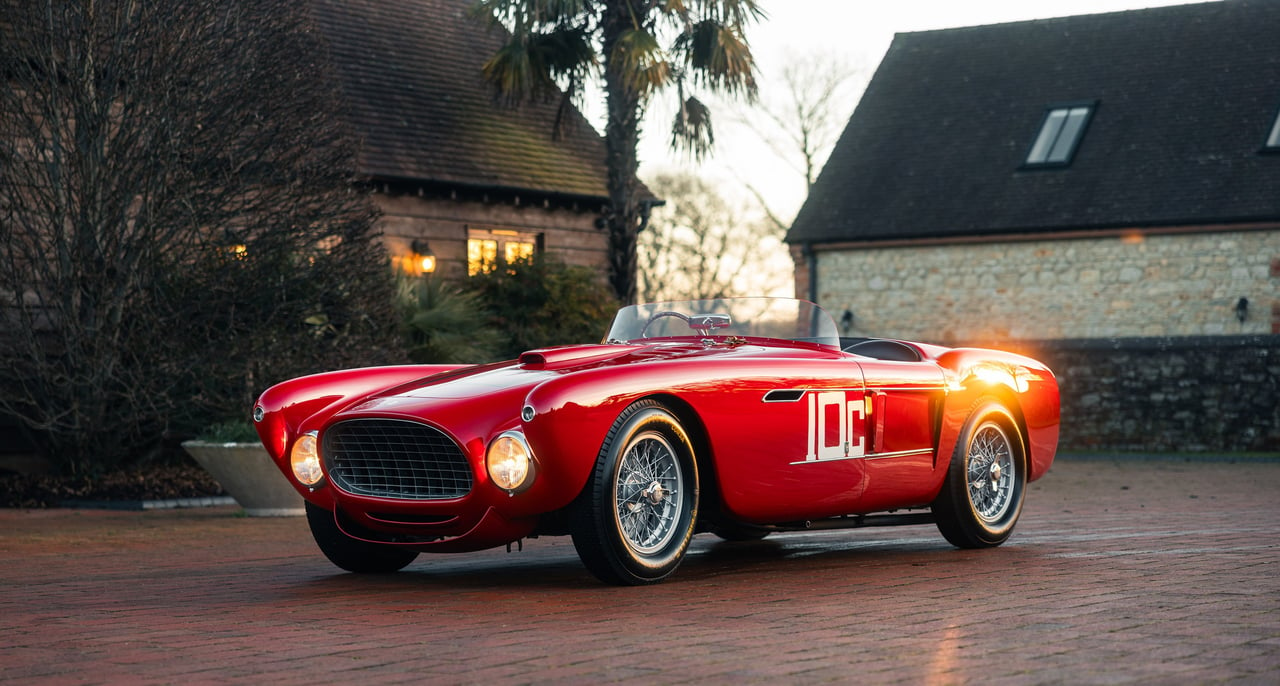
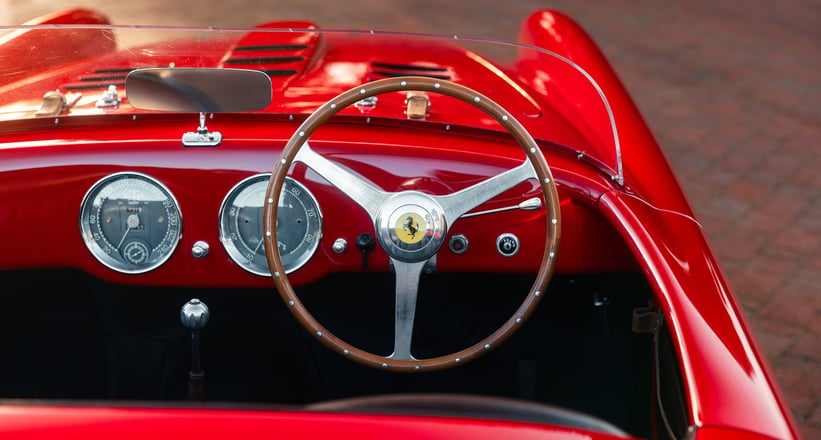
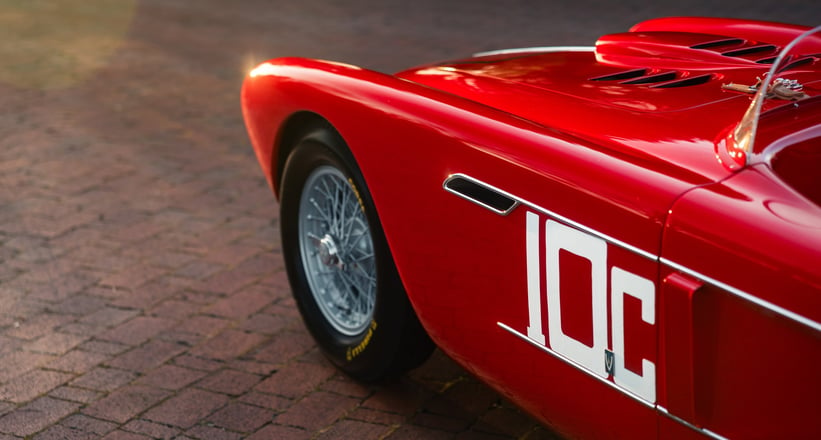
1952 Ferrari 340 Mexico Spyder chassis no. 0228 AT
However, 340 Mexico’s story is far from complete, because alongside the three Berlinettas, Ferrari built just one 340 Mexico Spyder, which just so happens to be available with Girardo & Co. Like its coupe siblings, chassis number 0228 AT boasted the same 4.1-litre V12 heart and a design penned by Michelotti, albeit with infinite headroom.
On paper, this 340 Mexico Spyder was built for victory, but its driver for the Carrera Panamericana was not the archetypal racer of the 1950s. At over six feet tall and weighing in at almost 250 lbs, William ‘Bill’ Spear was not your typical Ferrari pilot. However, Enzo recognised the Connecticut privateer as both a valued customer and a talented hot shoe who had already scored podium finishes as the 24 Hours of Le Mans and the 12 Hours of Sebring.

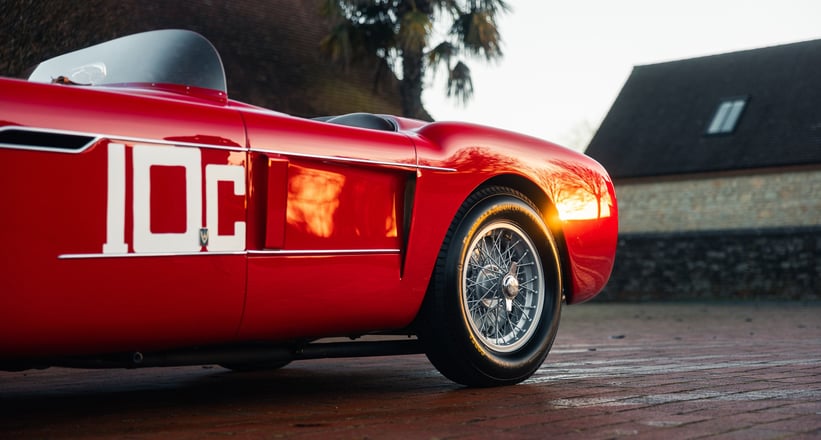

After boarding the same vessel as the three Berlinettas, chassis number 0228 AT and Spear were added to the entry list for the 1952 Carrera Panemericana, but the Mexican endurance race wouldn’t be the competition debut for this gorgeous Vignale Spyder. After Ferrari pulled the car from the competition for reasons unknown, its first taste of battle would come at the 1953 SCCA Championship at MacDill Air Force Base in Tampa, Florida, this time wearing Spear’s chosen colours of royal blue with a white bonnet and boot lid. However, because the six-hour race required two drivers, Spear called upon a 26-year-old Phil Hill, who had yet to become the first American Formula 1 World Champion. The pair had a tremendous race at MacDill, finishing second overall and missing out on victory by the narrowest margin as a result of several broken wheel spokes.


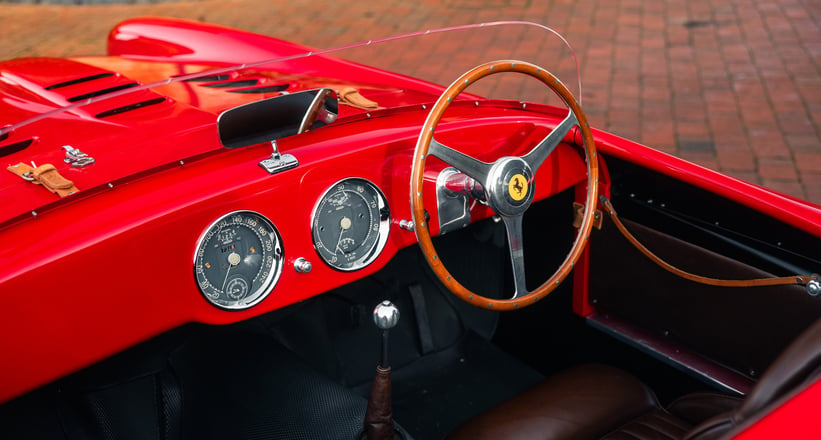
Despite adding a Ferrari 340 MM Spyder to his quiver, Spear still chose to compete with chassis number 0228 AT in the next few SCCA rounds at Bergstrom, Pebble Beach, Bridgehampton and Lockbourne, accruing two victories and two further podiums. Thanks to equally impressive results at the wheel of his 340 MM Spyder, Spear was crowned the 1953 SCCA National Sports Car Champion, proving both his driving prowess and the potency of this 340 Mexico Spyder.

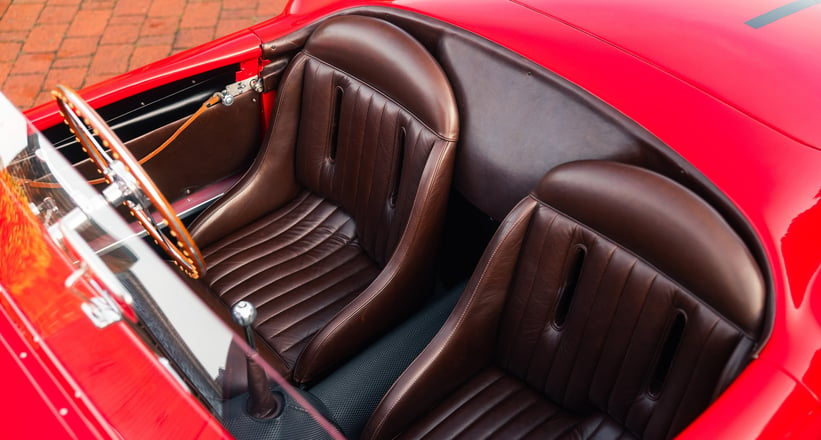
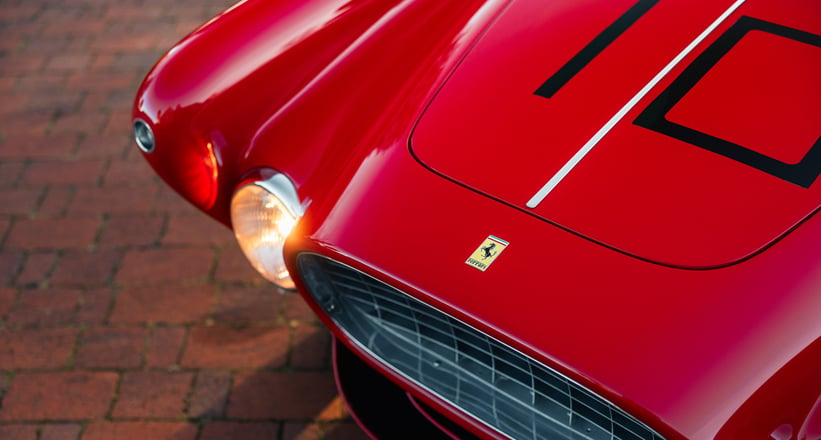
After Spear’s ownership, chassis number 0228 AT was purchased by Massachusetts European sports-car concessionaire Preston Gray, who painted it Canary Yellow and continued the car’s streak of successes, securing podium finishes as late as 1957, five years after it left Maranello.
Fast forward to the present day and this 340 Mexico Spyder looks every bit the race-winning prancing horse thanks to an extensive restoration by Brian Hoyt’s Perfect Reflections, who returned chassis number 0228 AT to the original specification in which it left the factory in October of 1952. Since being acquired by the current owner in 2011, this beautiful race-winning Ferrari has only made one public appearance at the 2015 Pebble Beach Concours d’Elegance and remains an excellent ticket to any the automotive world’s foremost beauty pageants.
Photos by Tom Shaxson





























